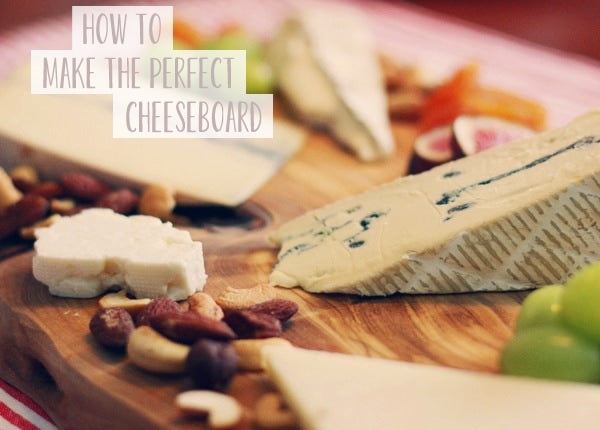First of all, you should chose a variety of different types of cheese. A well-balanced cheeseboard has one of each of the following categories: fresh, soft, semi-soft, hard, and blue. There are many examples of each type of cheese, but here are a few basics to get you started:

Fresh: feta, ricotta, mozzarella, mascarpone
Soft: brie, camembert, capricorn goat
Semi-soft: edam, havarti, taleggio, gouda
Hard: manchego, emmental, grana padano parmesan, aged cheddar
Blue: stilton, roquefort, gorgonzola, cambozola
Once you have decided on the cheeses you would like to serve, your next decision is the accompaniments. Here are a few examples of delicious things you can pair your cheeses with:
Fresh fruits: blackberries, strawberries, grapes, green apples, figs (if they are in season)
Dried fruits and nuts: apricots, cranberries, figs, various mixed nuts
Spreads: chutney, jam, mustard, olive oil & balsamic vinegar
And of course plenty of crackers and crusty french baguette.
(You can also add some cured meats to the plate as well, such as prosciutto and capicollo)

Next, take time to arrange the cheeses in a pleasing way and serve them on your favorite wooden platter or slate board. If you don't have either of those, you could also use a wood or plastic cutting board. Also, don't forget to include a knife or two for guests to help themselves.
*Tip: Take the cheeses out of the refrigerator an hour before you serve them so that they become room temperature. By doing this you are maximising the flavour potential of the cheeses.*





